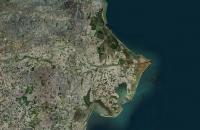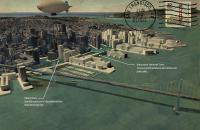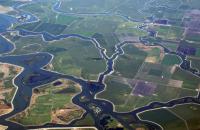Professor in Residence, Department of Architecture, GSD, Harvard University, Cambridge MA, USA
Issue's articles
Selective Retreat Scenarios for the Po River Delta
VOLUME 2/2017 - Issue 2 [RESILIENT EDGES], Pages: 653 - 668 published: 2017-10-31The increasing hydro-morphological and environmental degradation of lagoon systems is an issue shared by many Mediterranean contexts. A Selective Retreat Strategy could be a radical solution for these sites, in order to better manage the investments and maximize the efforts on some specific settings, deliberately omitting others. This approach comes from a research program developed by Sealine (Ferrara University) on the delta of the Po River. Such lagoon system is highly unstable, vulnerable to intense dynamics (coastal erosion, subsidence, saltwater intrusion, etc.) affecting both its ecological value and the human activities taking place around it (agriculture, fishing, aquaculture, tourism). The infrastructural effort to freeze its evolution is no longer maintainable and increasingly less efficient, given the site dimension and complexity. Besides these remarks, such proposal is encouraged by specific boundary conditions like the low productivity of farming areas and the land ownership arrangements based on few big properties. Therefore, it is possible to envisage a progressive site reorganization according to its historical character of evolving landscape shaped, over the centuries, by the alternation of natural phenomena and human interventions.
Between Land and Sea: An Approach for Resilient Waterfront Development along the San Francisco Bay
VOLUME 2/2017 - Issue 2 [RESILIENT EDGES], Pages: 273 - 294 published: 2017-10-31The waterfront along the San Francisco Bay is facing a growing threat from sea-level rise. By the end of the century, a projected sea-level rise of 55 in. [140 cm] will affect an estimated 128 sq. mi. [331 km2] of urban development valued at $62 billion. In addition, 2.1 million people and 660,000 homes are estimated to arrive by 2040, adding to the 7 million current Bay Area residents. Furthermore, sea-level rise will affect the ecology of the San Francisco Bay, threatening to submerge the majority of existing tidal wetlands by mid-century. To combat sea-level rise, many are calling for increased shoreline protection, while others suggest the removal of urban development in areas at risk of inundation, allowing tidal wetlands to migrate to higher elevations. In this proposal, I demonstrate that both may be accomplished by a managed retreat of existing development, enabling wetland migration, while introducing a resilient new typology of development built on levees that is designed to co-exist with a tidal ecosystem, enabling new relationships between urban life and bay ecology that redefine the coastal boundary.
Territory and Technology: a Case Study and Strategy from the California Delta
VOLUME 2/2017 - Issue 2 [RESILIENT EDGES], Pages: 243 - 271 published: 2017-10-30The notion of the resilient edge is perhaps most emblematic in deltaic landscapes, which are a landscape form par excellence of edge conditions - both for their fluctuating natural boundaries and complicated relationship with anthropogenic forces. Given this juxtaposition, it is worthwhile to revisit the early history of deltaic transformation and urbanization — from surfaces to edges — to gain insights into the future resilience of these landscapes and strategies for their redesign. In this essay, we investigate the early history of the California Delta, starting with the Swamp Lands Act of 1850, to gain insights into how policy and technology territorialized this vast inland estuary. We then reformulate this history as a contemporary strategy for the design of deltaic landscapes and introduce a pedagogical experiment to test our observations.



















